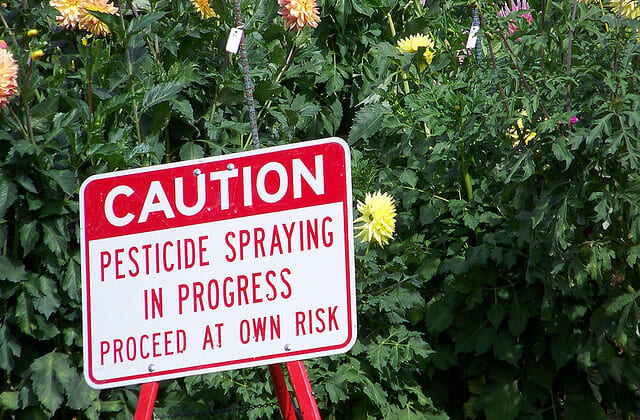
It seems as if the evidence suggesting a link between environmental toxins and autism keeps growing stronger. The latest study, published today in the journal Environmental Health Perspectives, revealed that the children of mothers exposed to organophosphates – a type of pesticide – were 60 percent more likely to be diagnosed with an autism spectrum disorder (ASD) compared to children born to mothers not exposed to the chemical.
As a scientist, this type of research demonstrates an emerging need to look at how chemicals in the environment are affecting our bodies.
Now, critics may say, “Dr. Manny, chemicals have been around for years!”
I would plainly disagree with that. Over the past 25 years, there has been an explosion in industrial globalization. On top of that, the substantial growth of the human population has created an increased demand for food that is cheap – but also in perfect and pristine condition.
When you go to a supermarket in the U.S. and look at the produce section, you see a rainbow of colors and unnaturally super-sized fruits and vegetables. Sometimes, they even look like wax figures! If you go to the poultry section, you see chickens that are as big as Arnold Schwarzenegger. These massive, perfectly-formed foods don’t sprout up naturally. They exist because of chemicals; pesticides allow vegetables to grow to mammoth proportions, while hormones and antibiotics pump up poultry to supernatural sizes.
Back in 2000, only one in 150 children in the U.S. was diagnosed with autism. Today, according to the latest statistics from the U.S. Centers for Disease Control and Prevention (CDC), one in 68 children is diagnosed with ASD. And within the most overpopulated and super-industrialized states in the U.S., autism rates are even worse. New Jersey has the highest rates of autism, with one in 45 children being diagnosed with some form of the disorder.
Even though it may not be fair to compare apples and oranges, rates of autism in some other industrialized countries are not as problematic as they are in the U.S. Countries like Denmark and Norway report a very low incidence of autism – and it’s not because they don’t test their children. Perhaps, it is their cleaner, less-polluted lifestyle that is protecting children in these countries from the disease.
This latest study reveals to me that we must pay more attention to the effects of pesticides and that more studies are needed to examine the link between these chemicals and neurodevelopmental disorders. Pregnant women need to be aware of this potential link – and they must try their utmost to pay attention to what they eat and avoid unnecessary exposures.
We still don’t know why autism occurs. Like any syndrome, the causes of autism are likely multifactorial – a combination of genetics, chemicals and other unknown factors. But as more studies emerge, it becomes apparent that one of those factors may have been identified: pesticides.
